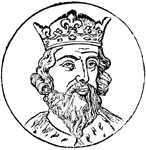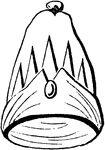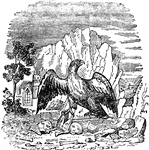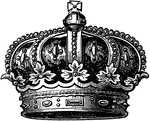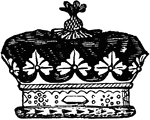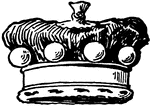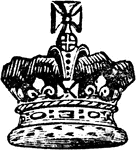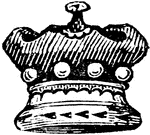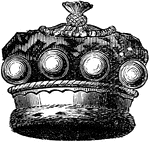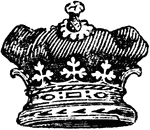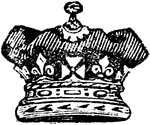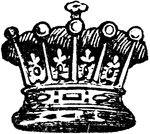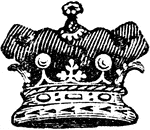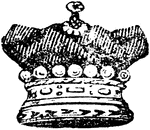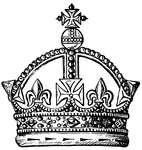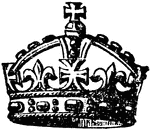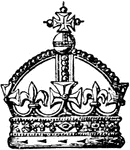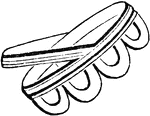
Admiralty's Anchor
"The Admiralty anchor differs only from the ordinary anchor in having a nut, a, worked on the square,…

An English King from the 9th or 10th Century, Possibly King Alfred
Illustration of an English king between AD 800 and 1000. The king is very likely King Alfred who reigned…

Anchor
"The vertical or supporting beam of the A. is the shank, B; at the upper end of it is the ring, r; and…
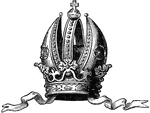
Imperial Crown of Austria
The Imperial crown of Austria, which greatly resembles the Episcopal mitre.
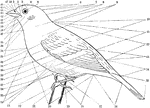
Topography of a Bird
"fig. 25 - Topography of a Bird. 1, forehead (frons). 2, lore. 3, circumocular region. 4, crown (vertex).…

Bower Anchor
"A, is the cathead; B, the fish davit; C, and E, bollards; D, the bill-board. The anchor is held in…

Structure of Canine Tooth
Vertical section of canine tooth to illustrate the various parts and structures.

Capital in the Temple at Denderah
In some temples the pillars have, in lieu of capital, the face of a goddess, probably of Isis, with…
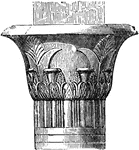
Capital in the Temple at Edfu
The capitals of the columns display an immense variety. The most beautiful have a crater-like form,…

Capital in the Temple at Edfu
The capitals of the columns display an immense variety. The most beautiful have a crater-like form,…
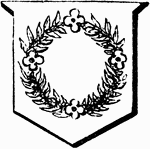
Chaplet
"Argent, a chaplet proper. CHAPLET. An ancient ornament for the head, granted to gallant knights for…
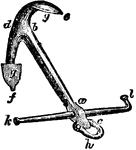
Common Anchor
"The shank is the straight part, ab; the square, ac, is that part of the shank to which the stock and…

Corona
"A crown, that is, a circular ornament of metal, leaves, or flowers, worn by the ancients round the…
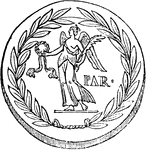
Corona
"A crown, that is, a circular ornament of metal, leaves, or flowers, worn by the ancients round the…

Coronet
An illustration of a coronet. A coronet is a small crown consisting of ornaments fixed on a metal ring.…
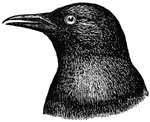
Crow
The true crows are large passerine birds that comprise the genus Corvus in the family Corvidae. Ranging…

Crown
"The crown of William I and his successors was a plain circlet heightened with four spikes having trefoil…
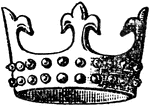
Crown
"Henry I enriched the plain circlet with gems, and on his great seal the trefoils of his fathers crown…

Crown
"The effigies of Henry II, Richard I, John, and their queens, show the crown to have made such an advance…

Crown
"The crown of Henry III has a plain circlet heightened with trefoils, a slightly raised point intervening…

Crown
"The truly beautiful crown of Edward II as it is represented in his effigy, was formed of four large…
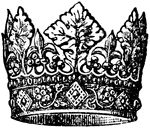
Crown
"It would seem from the crown, sculptured with elaborate care upon the head of his effigy at Canterbury,…
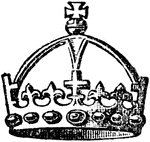
Crown
"The arched crown in its earliest form was introduced by Henry V.; and, with the arches crosses, which…

Crown
"Upon his seal as earl of Chester, the same sovereign has the circlet of his open crown heightened with…
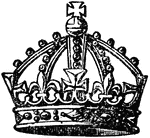
Crown
"The crown of the Stuart sovereigns, the first kings of Great Britain, James I and Charles I, had four…
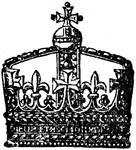
Crown
"Drawn from the royal achievement of Henry VII, sculptured with great spirit above the south entrance…
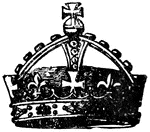
Crown
"The form of the arches shown appear for the first time upon the great seal of Edward VI." — Encyclopedia…

Crown
"The crown made for Charles II and also worn by James II, William III, and Anne, closely resembled an…
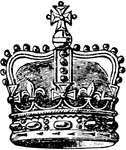
Crown
"The crown made for Charles II and also worn by James II, William III, and Anne, closely resembled an…

Crown
"The crown made for the coronation of Queen Victoria, has its entire surface completely covered with…

Crown
"Crowns were originally garlands of leaves; and in this form they have probably been used as an ornament…
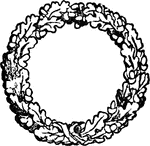
Crown
"Crowns were originally garlands of leaves; and in this form they have probably been used as an ornament…
